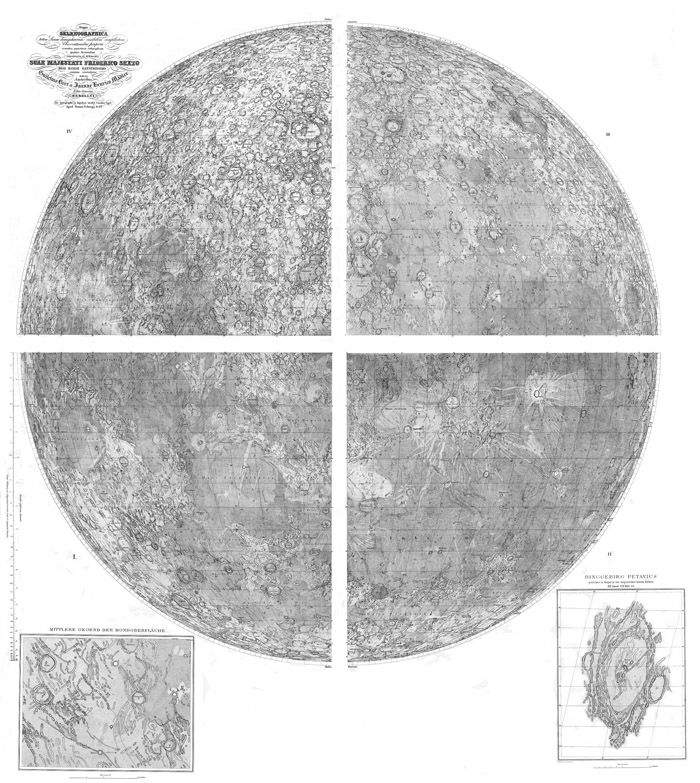July 6, 2010
B&M
image from Peter Grego
The most influential lunar map of the 19th century was still on display at Steward Observatory when I arrived at the University of Arizona in 1960. It is difficult to conceive that Apollo, LRO, or other modern results will still be used when they are 125 years old. The Mappa Selenographica by Beer and Mädler was published in 1834-6, and immediately transformed lunar studies. The map was far more complete and accurate than any that preceded it, and the text of the companion volume remained the last word on lunar science for decades. The map was the basis for modern nomenclature, with the introduction of systematic labeling of peaks, rilles and satellite craters. But time passes and old classics become nearly impossible to find, and certainly to afford if found. Enter Peter Grego, who has been reproducing classic lunar maps and selling them on eBay for reasonable prices. The B&M four quadrant maps Chuck Wood
Related Links
Beer & Mädler
The End of Lunar Studies
No Beer Here
COMMENTS?
Click on this icon File:PostIcon.jpg at the upper right to post a comment.




